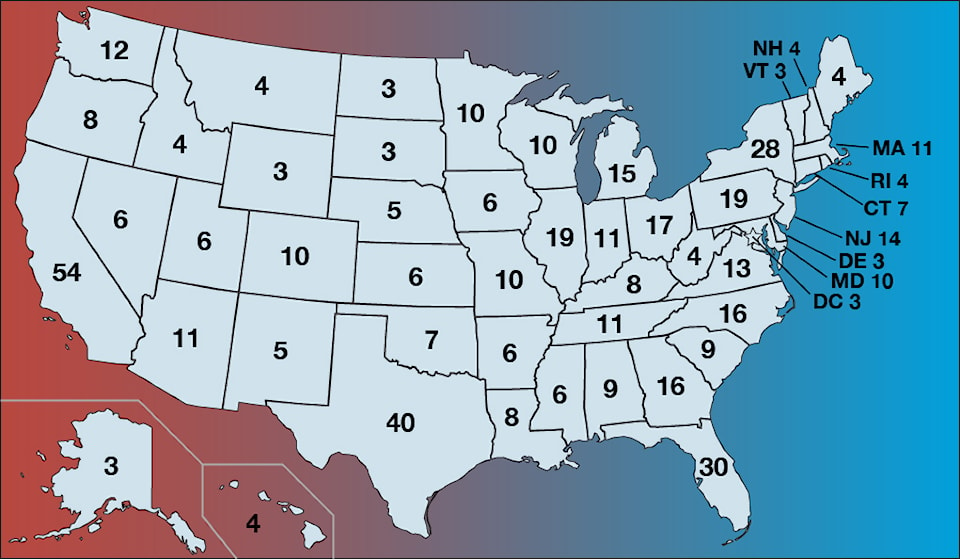The outcome of the United States presidential election depends on how voters in so-called swing states cast their ballots.
ShareAmerica, the U.S. Department of State’s platform for sharing stories and information regarding American culture and society, describes swing states as “battleground states” with voters too closely divided politically to be able to accurately predict which party will take the area.
This year, they include Arizona, Georgia, Michigan, Nevada, North Carolina, Pennsylvania and Wisconsin. It’s expected the margins between the slates, Vice President Kamala Harris and Minnesota Governor Tim Walz for the Democrats and former President Donald J. Trump and Ohio Senator JD Vance for the Republicans, will be razor thin.
Because candidates are able to predict the majority of which states will give them support, they tend to focus some specific attention on these outliers and make visits to hear concerns directly from voters.
Swing states change over time and will not necessarily be the same in future elections.
Along with the vote outcome in swing states, it’s important to understand the role of the Electoral College.
The Electoral College can be described as an election process that includes a meeting of selected electors who cast votes for the president and vice president and the counting of these votes by Congress.
Each state will have the same number of electors as members it has in Congress. Currently, there are 538 electors. A presidential candidate requires 270 of these votes to win.
“In other U.S. elections, candidates are elected directly by popular vote,” the U.S. Government webpage on the Electoral Colleges reads. “But the president and vice president are not elected directly by citizens. Instead, they are chosen through the Electoral College process.”
Picking electors involves two steps.
According to the U.S. National Archives, the first step is for each state’s affiliated political parties to select a slate of potential electors before the general election.
The next step happens during the general election. Voters cast a ballot towards the potential elector they prefer to be selected for the Electoral College. All states but Maine and Nebraska use a winner-take-all electoral college vote system. Maine and Nebraska use a proportional distribution of electors.
From these ballots, a projected winner is announced on election night in November, but the vote with selected electors occurs in mid-December.
See this projected timeline of the 2024 election for a further breakdown of this process.
In the simplest terms, the electors of the Electoral College are the only people who directly vote for president and vice president. The average U.S. voter instead votes for whom they wish to be selected as an elector.



.png;w=120;h=80;mode=crop)
